I would like to create an UML diagram with Java enumerations (enum), that have one or more attributes, but I am confused about how to do it.
For example an enum could be declared like this:
public enum Enumeration_type {
LITERAL_A("attr1_value", attr2_value, attr3_value),
LITERAL_B("attr1_value", attr2_value, attr3_value);
final String attr1;
final type_1 attr2 = initial_value_1;
final type_2 attr3;
Enumeration_type(String attr1, type_1 attr2, type_2 attr3) {
this.attr1_value = attr1;
this.attr2_value = attr2;
this.attr3_value = attr3;
}
}
Without the attributes, it is easy:
+--------------------+
| <<enumeration> |
| Enumeration_type |
+--------------------+
| LITERAL_A |
| LITERAL_B |
+--------------------+
But how do you model it with attributes elegantly? Should it be like this?
+-----------------------------------------------------+
| <<enumeration>> |
| Enumeration_type |
+-----------------------------------------------------+
| attr1: String |
| attr2: type_1 = initial_value_1 |
| attr2: type_2 |
+-----------------------------------------------------+
| LITERAL_A("attr1_value", attr2_value, attr3_value) |
| LITERAL_B("attr1_value", attr2_value, attr3_value) |
+-----------------------------------------------------+
I found only this example here, but that uses the String class attributes as enum names. I think, that should be different to usage of public enum without specifying the enum names data types.
+-----------------------------------------+
| <<enumeration>> |
| CarType |
+-----------------------------------------+
| +sedan : String = SEDAN |
| +liftback : String = LIFTBACK |
| +stationWagon : String = STATION_WAGON |
+-----------------------------------------+

